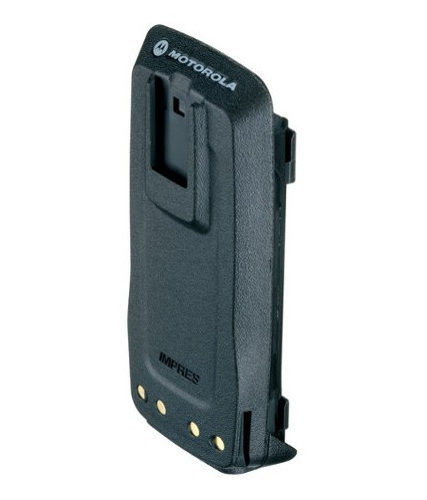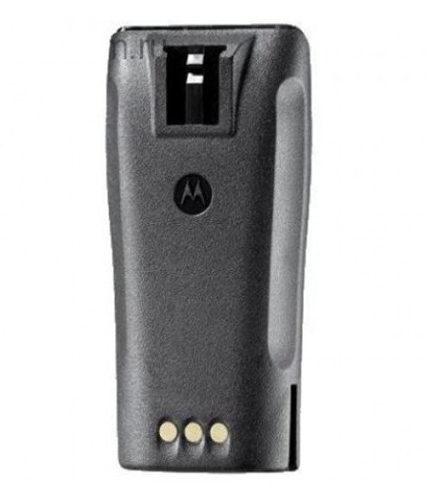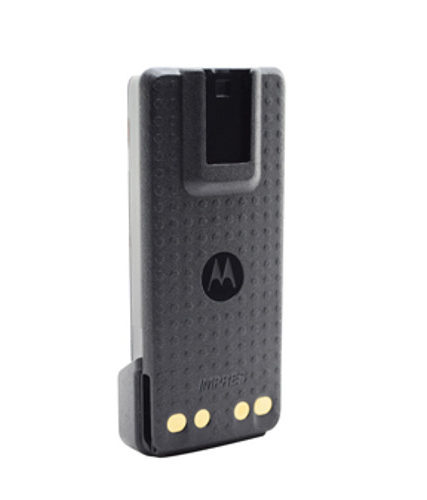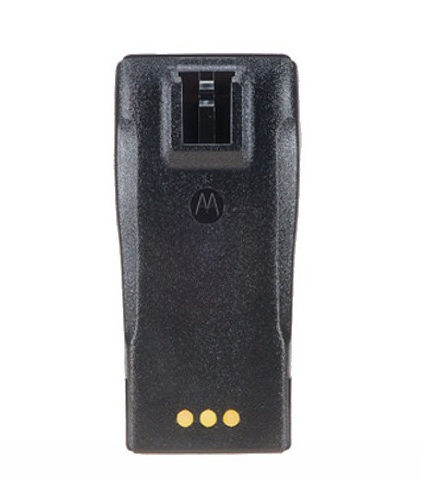

Motorola Series IMPRES DP4000 Battery PMNN4407 Li-Ion 1600mAh
Features
Compatible with DP4400 DP4401 DP4600 DP4601 DP4800 DP4801.
IMPRESS Battery
Description

Product Description
This is a Genuine Motorola Li-Ion 1600mAh Battery that are compatible with the MOTOTRBO DP4000 Series of radios. This is a much lighter and slimmer battery than the Ni-MH Battery supplied as standard with the DP4000 Series.
Compatible with DP4400 DP4401 DP4600 DP4601 DP4800 DP4801
IMPRESS battery benefits – Longer Battery Life – Accurately monitor how long battery have left – Longer lifespan 43% more than standard –
Dimensions H x W x D(mm) 112.35 x 51.65 x 17.90
• Weight(g): 130g
• Chemistry: Li-Ion
• Operational Time(Hrs): Digital-11
• Capacity[mAH]: 1600mAh(Typical)
• Intelligent: Yes
• Memory Effect: None
• Intrinsic Safety : No
This product is brand new and comes in bulk packaging.
Radio Licensing Information
Radio licensing: A guide to licensed and licence-free radios
What is a radio licence and do I need one?
There are two types of two-way radios, licensed radios and licence-free radios (PMR446).
Licensed radios require a dedicated frequency which ensures that only those on that frequency can hear transmissions. In order to access a dedicated frequency, a radio licence granted by Comreg is required by law. Licences are based on the quantity of equipment to be licensed.
The cost is €22 per piece of equipment plus a fixed charge of €22 for the duration of the licence. (e.g. 4 walkie talkies + 2 radio mics = 6 units +1 Fixed Charge = 7 x €22 = €154).
Licence-free radios (also called PMR446 radios) operate on the PMR446 radio frequency, they can be used by anyone within the UK and EU and as the title suggests they need no radio licence.
Licensed radios

Licensed radios are usually more expensive than licence-free models, but have a larger power output (of up to 5 watts for handheld radios) and so offer increased range and coverage.
For example a primary school would typically find coverage on licence-free equipment sufficient whereas licenced equipment would be better suited to a secondary school, college or university.
In addition, a licence will offer increased security of transmissions through better monitoring of frequencies, especially if the licence is specific to your site.
Licenced radios are generally more robust, with clearer audio quality and the conversation more secure. Licensed radios also offer much more functionality than license-free radios, you can make group calls, send text messages and dial up individual users.
More about your Comreg licence
In order to obtain your licence, an application to Comreg has to be made. We are more than happy to apply on your behalf and offer a managed service in order to maintain your Comreg licence throughout your radio project. Or if you wish to make an application yourself, please feel free to ask us any questions along the way as we have vast experience in completing these forms and can go through it with you over the telephone. The application process is usually complete within 10-15 working days.
You can find out more by going to: https://www.comreg.ie/industry/radio-spectrum/licensing/search-licence-type/business-radio/
Licence-free radios

Non licensed radios are a cheaper alternative to licensed radios and can only have a power output of 0.5 watts giving them a fairly small range.
Licence-free radios can be used in the work place and for personal use, ideally where minimal coverage is needed, within small buildings where users are communicating in a close range.
Examples where these radios can be used effectively include smaller schools and construction sites, warehouses, hospitality venues and independent retail businesses.
For leisure they can be ideal for communicating between friends and family while camping and skiing, or if you are at a leisure park or hiking.
All PMR446 radios use the same eight channels. If there are a high number of users in a given area (cities and other built up areas) frequencies become extremely congested leading to interference on the channels, although usually there are multiple channels to select in order to find a clearer channel.








Reviews
There are no reviews yet.